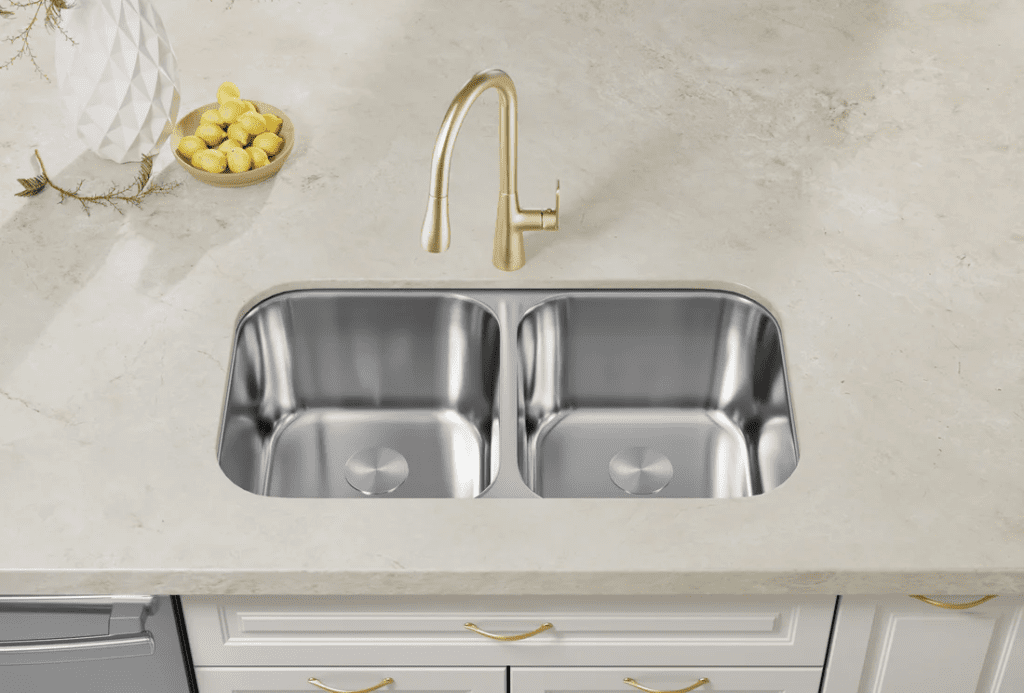Throughout the history of domestic design, certain household features reveal intriguing insights into daily life, social structures, and the practical needs of the past. One such feature is the antique mopping sink—a knee-height sink designed specifically for filling and emptying mop buckets without strenuous lifting. Once a common sight in stately homes and manors, this unique sink tells a story of functionality, craftsmanship, and the values of its time. Let’s dive into the history and purpose of these fascinating household artifacts.

The Purpose Behind the Antique Mopping Sink
Antique mopping sinks were created with one purpose in mind: to make mopping and other cleaning tasks easier and more efficient. In a time when household cleaning involved labor-intensive work, having a knee-level sink that eliminated the need for bending and lifting heavy buckets was invaluable. The sink’s low height allowed workers to fill and empty mop buckets with minimal physical strain, enhancing efficiency and reducing injury risks.
This design speaks volumes about the attention given to ergonomic considerations and practical efficiency in the homes of the past. With large households often requiring daily cleaning, these sinks served as essential tools for staff and helped keep the household running smoothly.
Crafted from Durable, Elegant Materials
Not only were these sinks designed with practicality in mind, but they were also built to last. Many antique mopping sinks were crafted from sturdy materials like stone, porcelain, or cast iron. Each material was chosen for its ability to withstand frequent use and exposure to water, ensuring the sink could handle the rigors of daily cleaning.
What’s more, these sinks were often beautiful pieces in their own right. Some featured intricate designs, ornate edges, or inscriptions that added an aesthetic appeal to what was essentially a utility feature. Today, this craftsmanship endures as a testament to the quality and attention to detail found in historical home design.
The Sink’s Placement in Utility Spaces
These antique mopping sinks were typically located in utility rooms, back halls, or sculleries—spaces dedicated to household tasks and largely hidden from the main living areas. This placement reflects the societal values of the time, when domestic work was kept out of view from the household’s occupants and guests. By positioning the sink in a separate space, homeowners maintained a division between “front of house” and “back of house” areas, ensuring that cleaning and other household duties were invisible to the more refined members of the family.
This separation not only preserved the main areas for entertaining and family life but also highlights the historical role of domestic staff and the distinctions between living and working spaces within a household. The presence of these sinks in hidden utility spaces reveals a glimpse into the daily rhythms and hierarchies of past households.

An Insight into Social Structure and Household Management
The antique mopping sink also offers insight into the social structure of the time, particularly within wealthier households that employed domestic staff. In many households, the role of cleaning and upkeep was handled by housemaids and servants, whose daily routines were physically demanding. The design of a specialized, knee-level sink demonstrates an acknowledgment of the needs of these workers, providing a solution that made their tasks a bit easier and more efficient.
In this way, the mopping sink reflects an awareness of the importance of household management and the well-being of staff. While domestic work was labor-intensive, thoughtful design features like these sinks indicate that home architects and designers were concerned with creating a functional and humane work environment for household employees.
A Symbol of Practical Innovation in Household Design
The knee-level mopping sink is a fine example of practical innovation in household design. Its ergonomic considerations and specific utility show how form and function merged in domestic spaces to improve efficiency. These sinks were a practical response to the demands of household cleaning, exemplifying how innovative thinking could streamline even the most routine tasks.
Today, these sinks remind us of a time when such innovations were valued and appreciated, when every household feature was designed with a clear purpose in mind. By solving a simple problem—making mopping less strenuous—the antique mopping sink contributed to a smoother household operation and reflected the ingenuity of its era.
Repurposing Antique Sinks in Modern Homes

As times have changed, the need for knee-level mopping sinks has diminished, but these beautiful artifacts are far from obsolete. Many antique mopping sinks have found new life in modern homes, repurposed as decorative elements that add a touch of historical charm. They are often integrated into garden spaces, used as plant basins, or even turned into unique washbasins in bathrooms, where their vintage appeal becomes a design focal point.
Homeowners and designers today prize these antique sinks for their history, craftsmanship, and durability. By repurposing them, we honor the resourcefulness of past generations while introducing a timeless aesthetic to contemporary spaces. These once-hidden utility features now enjoy a place of pride, celebrating both their functionality and artistry.
A Lasting Symbol of Domestic Life and Social Change
The antique mopping sink stands as more than just a functional item; it’s a cultural and architectural relic that reflects a time when household work was done by hand, and design innovations were used to ease these manual tasks. Its enduring appeal among collectors and designers shows an appreciation for the history embedded in these household features. The sink offers us a window into the past, reminding us of how social structures and domestic routines shaped the design of our homes.
In studying artifacts like these sinks, we gain insight into the evolution of home life, the changing dynamics of labor, and the blend of beauty and functionality that characterized historic home design.
Conclusion: The Antique Mopping Sink as a Testament to Design and History
The antique mopping sink is a symbol of a bygone era, capturing a blend of utility, craftsmanship, and social history. From easing the workload of household staff to serving as elegant, functional pieces of craftsmanship, these sinks reflect the values and lifestyle of their time. Today, they continue to hold value as unique historical artifacts and as cherished decor elements in modern homes.
In every aspect—from their sturdy construction to their understated beauty—these sinks remind us of the timelessness of thoughtful design. As we admire or repurpose these relics today, we carry forward the legacy of their creators, celebrating a piece of household history that seamlessly balanced functionality with artistry.


